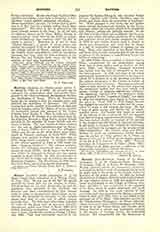

Bouvet, JOACHIM, Jesuit missionary, b. at Le Mans, France (date unknown); d. at Peking, China, June 28, 1732. He was one of the first six Jesuits selected by Louis XIV for the mission in China. Before setting out for their destination, he and his associates were admitted to the Academie des Sciences and were commissioned by that learned body to carry on astronomical observations, to determine the geographical positions of the various places they were to visit, and to collect various scientific data. The little band, after being provided by order of the King with all necessary scientific instruments, sailed from Brest, March 3, 1685, with Father Fontaney as Superior. After spending some time in Siam, they finally arrived in Peking, February 7, 1688. They were favorably received by the emperor the famous Khang-hi, who retained Father Bouvet, together with Father Gerbillon, near his person and made them his instructors in mathematics. While engaged in this work, the two fathers wrote several mathematical treatises in the Tartar language, which the emperor caused to be translated into Chinese, adding the prefaces himself. So far did they win his esteem and confidence that he gave them a site within the palace enclosure for a church and residence which were finally completed in 1702. In 1679 he sent Father Bouvet back to France to obtain new missionaries and made him the bearer of a gift of forty-nine volumes in Chinese for the king. These were deposited in the Royal Library, and Louis XIV, in turn, commissioned Father Bouvet to present to the emperor a magnificently bound collection of engravings.
In 1699 Father Bouvet arrived a second time in China, accompanied by ten missionaries, among them men of great ability, such as Fathers de Pre-mare, Regis, and Parrenin. Khang-hi honored him further with the title of interpreter to his son, the heir-apparent. In 1700, with four of his fellow missionaries, he presented a memorial to the emperor, asking for a decision as to the meaning attached to the various ceremonies of the Chinese in honor of Confucius and their ancestors. The emperor, who had taken a keen interest in the controversy regarding the ceremonies, replied that they were simply civil usages, having no religious significance whatever. The memorial, together with the emperor’s reply, was published in the “Gazette de Pekin”, but failed to allay the excitement then raging in Europe over the question. From 1708 to 1715 Father Bouvet was engaged in a survey of the empire and the preparation of maps of the various provinces. He was a man of great energy and ability, and of simple, unselfish piety. For nearly fifty years he shared all the labors of the missionaries and was engaged from time to time in various scientific works. During this long period, chiefly on account of his services to the emperor and the favor he enjoyed with him, he did much to advance the interests of Christianity and to facilitate the entrance and the labors of his fellow-missionaries. His Chinese name was Petsin. Besides his works on mathematics, Father Bouvet was the author of “Etat present de la Chine, en figures gravees par P. Giffart sur les dessins apportes au roi par le P. J. Bouvet” (Paris, 1697); “Portrait historique de l’empereur de la Chine” (Paris, 1697). The library at Le Mans contains a collection of his manuscripts including a Chinese dictionary.
HENRY M. BROCK

